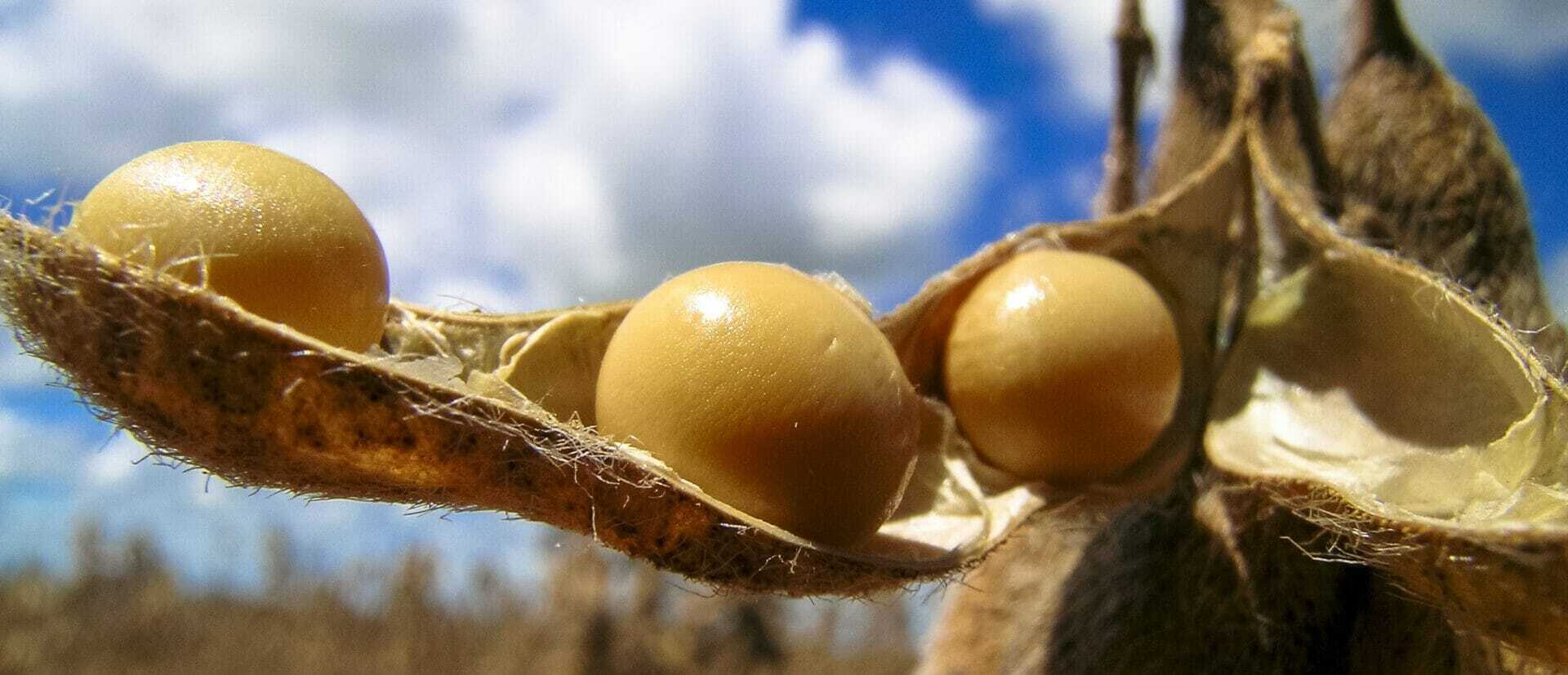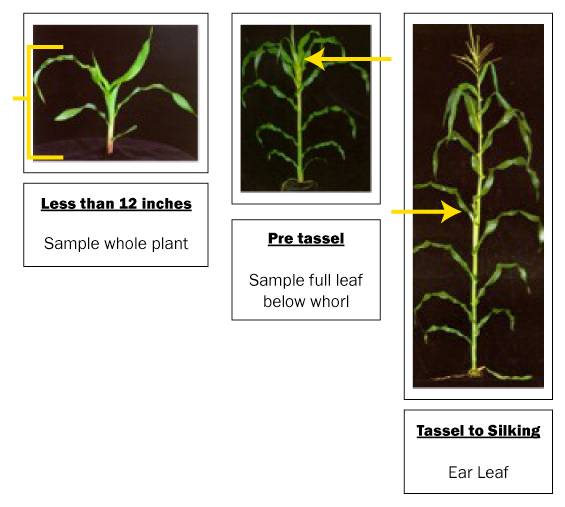 Corn Rootworms have arrived in Northeast Iowa nearly three weeks prior to normal years. Farmers are urged to be diligent in scouting fields and monitoring pressures in the coming weeks. For more information, tune into Nick Benson’s most recent YouTube video:
Corn Rootworms have arrived in Northeast Iowa nearly three weeks prior to normal years. Farmers are urged to be diligent in scouting fields and monitoring pressures in the coming weeks. For more information, tune into Nick Benson’s most recent YouTube video:
-
Latham Hi‑Tech Seeds
Corn Rootworm in Northeast Iowa
http://youtu.be/TLNYMhaw-u4 -
Latham Hi‑Tech Seeds
Franklin County Farm Family Shares Favorite Bread Recipe

Guest post by Kourtney Determan, Marketing & Communications Intern
 Like all things, the 4-H program has changed a great deal through the years. Gail Castillo of Latimer, Iowa, not only recognizes those changes, but appreciates them.
Like all things, the 4-H program has changed a great deal through the years. Gail Castillo of Latimer, Iowa, not only recognizes those changes, but appreciates them.“The biggest difference is that families and young people have so many different opportunities and choices. It changes the time factor,” Gail explains. Her own two children, Andy and Abby, are involved in many different 4-H projects, so Gail understands how families have had to adjust.
Gail grew up in Franklin County, graduating from CAL (Coulter, Alexander and Latimer) High School. She was involved in 4-H during the time when girls clubs were given the option to focus on one project per year, rotating through Home Improvement, Sewing and Foods project areas. Gail learned to sew, bake and refinish furniture.
“I remember having to constantly battle the heat and humidity when trying to refurbish furniture,” she says. “I also loved the pie baking contest at the fair and then auctioning off the pies after the swine show at the fair.”
Gail is still involved in the 4-H program as a Regional Program Specialist for Iowa State University Extension and Outreach. She provides leadership for five different counties including: Franklin, Cerro Gordo, Mitchell, Worth and Floyd. She helps provide Food Safety and Quality Assurance training, regional camps, leadership training, science, engineering, and technology opportunities, as well as a variety of other programming. Gail also loves the opportunities she gets to share her agricultural background. “Most of our kids are from towns and cities, but it is still a spectacular thing to teach kids where their food comes from, even through horticulture projects.”
 Living on acreage outside of Latimer, Gail’s own children get to experience rural living. “I wanted my kids to have the experience of being away from town. Even though we don’t live on a working farm, they get the farm life on my parent’s farm only three miles away.”
Living on acreage outside of Latimer, Gail’s own children get to experience rural living. “I wanted my kids to have the experience of being away from town. Even though we don’t live on a working farm, they get the farm life on my parent’s farm only three miles away.”Andy and Abby are both active in a variety of 4-H projects including photography, robotics. Sixteen-year-old Andy also serves on county council, while 12-year-old Abby is interested in baking.
Perhaps Abby will even try her hand at baking bread, which is one of the projects Gail entered as a 4-H member. “We call it ‘Bob’s Favorite Bread,’ because it was my dad’s favorite when I was growing up.”
Today Gail is sharing her dad’s favorite bread recipe on TheFieldPosition.com. Do you have a “blue ribbon recipe” that you’d like to share? Feel free to post it below or send it to shannonl@lathamseeds.com.
Gail’s Pizza Dough (adapted from Fleischmann’s Yeast)
Makes 2 crusts
Ingredients:
- 2-1/2 to 3 cups flour
- 1/2 cup corn meal
- 1/2 cup Parmesan cheese (grated)
- 3/4 teaspoon salt
- 1 pkg. rapid rise yeast
- 2 T. olive oil
- 1 cup warm water
Directions:
- Combine 2 cups flour and other dry ingredients (including yeast).
- Stir in olive oil and water. Stir in enough remaining flour to make soft dough.
- Knead until smooth.
- Cover and let rest.
- Shape into pan and add ingredients as desired.
- Bake at 400° for about 20 minutes (until cheese is warm and bubbly).
-
Latham Hi‑Tech Seeds
History is growing in Alexander
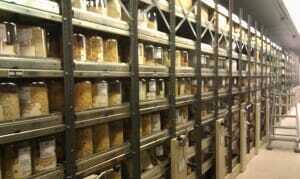

Wild Teosinte planted in the Genetic Garden The living museum of corn planted at Latham Hi‑Tech Seeds’ headquarters is growing! Teosinte and Green & Golden Dent varieties required replanting on June 5 due to a lack of moisture and emergence issues. After a much needed 0.9” of an inch of rain in Alexander on June 15, the Genetic Garden is rejuvenated and well on its way!
Wild teosinte the oldest ancestor of corn originated from what is now Mexico and Central America. This corn has very small seeds that were hand planted because of their delicate size. The seeds are prism shaped with a flat bottom

Wild Teosinte cob is very delicate that lays tight to the other seeds to make a cob. The color of the seed is dark brown and this is thought to help disguise them from predators that would eat the seeds. The wild teosinte accession planted in the genetic garden is growing very well; this plant is delicate and resembles more of a grass type plant.
Corey Catt, Latham Hi‑Tech Seeds Forage Products Manager, and I had the privilege of meeting Mark Millard, Geneticist/Maize Curator at the North Central Regional Plant Introduction Station(NCRPIS) in Ames, Iowa. We were given a tour of the facilities including the seed storage facilities. More than 20,000 accessions of zea maize are in cold storage where they can be kept viable for around 30 years. Accessions of maize are regenerated in order to keep supply available for researchers and educators across the world. Along with the collections of maize, varieties of ornamental plants, vegetables, oilseed crops, amaranth and other few other miscellaneous crops are stored at NCRPIS.

Collection of zea maize at the North Central Regional Plant Introduction Station, Ames, Iowa I am looking forward to seeing the continued growth of our Genetic Garden and learning more about each variety. In the coming weeks, we’ll begin researching and building a walking museum at the plot. Look for more updates on the Genetic Garden on TheFieldPosition.com. We’d also like to invite you to see it for yourself! Take a walk through our “living museum of corn” on Saturday, Aug. 25, during the Latham Country Fair.
-
Latham Hi‑Tech Seeds
It Takes Faith to Plant Seeds
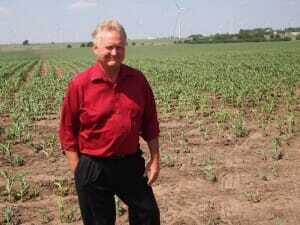
“Though I do not believe that a plant will spring up where no seed has been,
I have great faith in a seed. Convince me that you have a seed there,
and I am prepared to expect wonders.”
– Henry David Thoreau
Larry Sailer on his corn and soybean farm, just north of Iowa Falls, Iowa. – Photo Courtesy of Jonathan Ahl with NPR Most people don’t fully understand what it takes to put in a crop every year. Farmers like me, who invest several hundred thousand dollars each year, must have faith that the seed will grow into a crop.
There are more than 1,000 variables that affect a growing crop each season. I have been reminded of these variables – most of which are beyond my control – time and again! My crops suffered extreme hail damage during three of the first five years of the 1980s. That many years of crop loss certainly made a bad situation worse.
Weather can be a blessing or a curse, according to Dr. Fred Below, Professor of Plant Physiology at the University of Illinois. His research reveals the seven most important factors to achieve the highest possible corn yields. Weather ranks #1, accounting for 70 bushels or more per acre or 27% of total yield! (Now you might have a better understanding of why farmers talk almost obsessively about the weather.)
Rain can certainly make or break a crop. All seeds need water and warmth to germinate. Once the seedlings emerge from the soil, timely rains are needed for plant and crop development. Timely rains have been hard to come by this spring in North Central Iowa. A lack of rainfall caused crop conditions to decline for three straight weeks. Thankfully, we finally received some rain at the end of last week. These rains helped stabilize crop conditions, but we’re not out of the woods yet. Although topsoil moisture levels improved, 54% still remains short to very short. Subsoil moisture declined slightly over the past week with 61% short to very short. Bottom line: parts of Iowa are still suffering drought.
In addition to weather, another hot topic of conversation for farmers is the 2012 Farm Bill. Last Wednesday I was featured in an interview with NPR where I voiced my opinion that corn and soybean farmers still need federal crop insurance in case of natural disasters and revenue assurances to protect them from a market collapse. Farmers Split Over Subsidies As Senate Farm Bill Debate Begins. I shared a link to this NPR report on my Facebook page and ended up taking it down because it sparked such a heated online argument. Apparently, farmers aren’t the only ones interested in this debate! Guess this really isn’t too surprising given that 80% of the 2012 Farm Bill is non-farm related.
-
Latham Hi‑Tech Seeds
Father’s Day: A Time to Reminisce
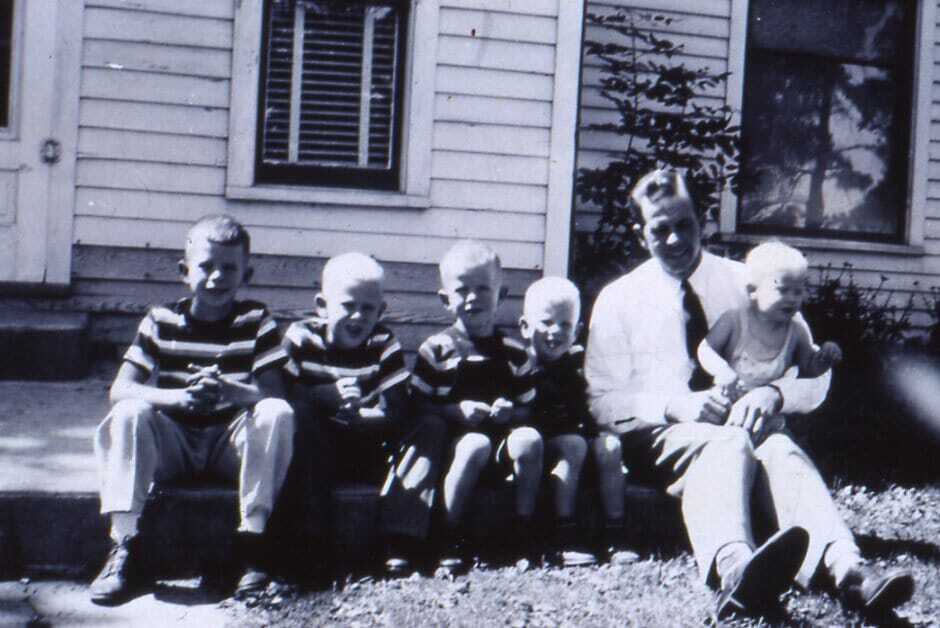
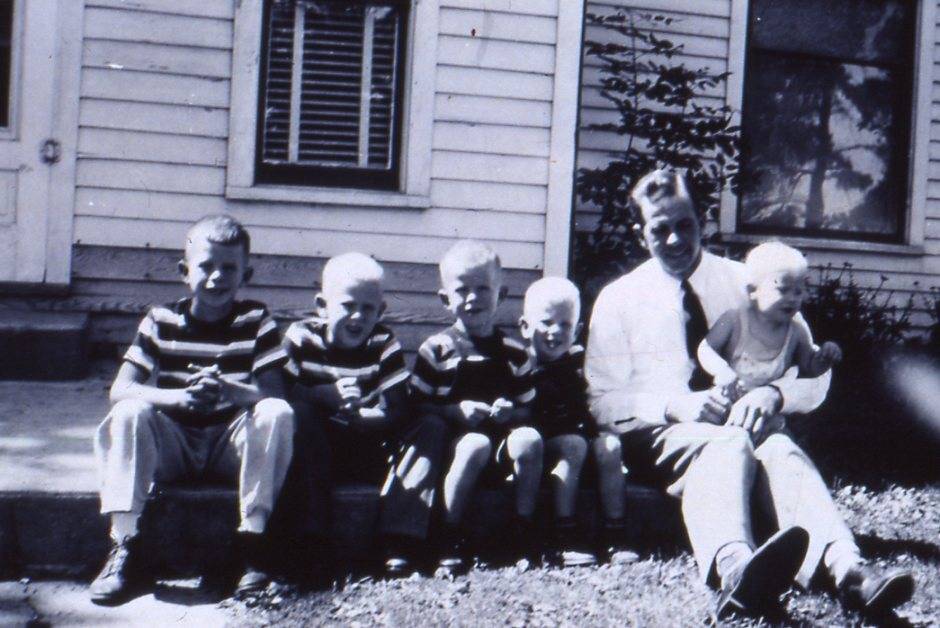
Willard Latham on the front steps of their farm house with his five boys, in birth order, from left to right: Bill, Bob, Jim, Don and Tom. (1949) A Dad is…
respected because he gives his children leadership.
appreciated because he gives his children care.
valued because he gives his children time.
loved because he gives his children the one thing they treasure most – himself.
~ Author UnknownThe third Sunday of June is a time when Americans traditionally honor their fathers. This father’s day – in honor of the 65th anniversary of Latham Seeds – we’re paying tribute to the man who started it all.
Willard Latham is perhaps best known as a leader in the seed industry, but he was a farmer first and foremost. Willard earned a bachelor’s degree in Dairy Husbandry from Iowa State, and then returned to Alexander where he joined his father in the dairy operation.
An insatiable appetite for learning and an uncanny ability to solve nearly any problem led Willard to found Latham Seeds in 1947. At that time, the oat crop in North Central Iowa was affected by smut. Willard retrofitted a piece of equipment that helped clean and preserve the local oats crop. Cleaning oats soon evolved into producing seed for retail sales. The seed business grew as Willard and his loving wife and devoted life partner, Evelyn, worked together.
Today Willard and Evelyn’s five sons share lessons they learned about life and business from their father.
“Dad thought it was a good idea for all of us to get some other experience before returning to the family business. We followed that advice and encouraged our children in the same way. He knew his association with Iowa State and relationships with organizations such as the Iowa Seed Association, and all the other groups he was active in, were important to keep up with new technologies and best practices. He provided us with a great learning environment and experiences.”
Bob Latham:
“I remember Dad and his identical twin brother, Wilbur, sitting around the table talking, giving and taking advice, enjoying one another’s company. They maintained a close relationship all their lives. It was a good example for us. To this day, I’m involved with my brothers –– we have good, healthy relationships from growing up and working together in the family business. Dad really understood the benefits of good relations in family and business. He taught us that lesson well.”
Jim Latham:
“My father really worked hard. This was during and after World War II. Frankly, a terrible era war-wise but a wonderful era character-wise. Dad belonged to a generation that together they could get things done. There was a belief that if you worked hard enough, paid attention to the rules, treated your neighbor right – treated everybody right – then you’re going to succeed, That’s what my father, and many people believed, and they made it a wonderful era.”
Don Latham:
“We really learned lessons of integrity from Dad. His friend, Harold Folkerts, had a seed business about 50 miles east of us. During spring season, they’d trade loads of oats, say Cherokee for Goodland, to meet customer orders for specific seed. They kept track of transactions but never talked price. It never was a factor. At the end of the season, Harold would come out and sit at the table with Dad and say that the oats he got in trade were better than the ones he traded. Dad would say it was the other way around. They’d literally argue the other fellow’s position every time. It was a philosophy that you never wanted to take advantage of someone else. You always wanted to be fair and honest. Those were lessons we always went with: integrity and doing the right thing pays dividends in the long run.”
“Dad taught us how very important it was to work hard and to be extremely honest – to be straightforward. If something wasn’t right, you fixed it. Your word is your bond, and that’s really what a family business is all about. Dad would take great pride that the company is still family-owned and carries on those traditions that were very important to both him and Mom.”
-
Latham Hi‑Tech Seeds
Feast on Prime Rib for Father’s Day
“Father taught us that opportunity and responsibility go hand in hand. I think we all act on that principle; on the basic human impulse that makes a man want to make the best of what’s in him and what’s been given him.” — Laurence Rockefeller
Time to buy the card, wrap the gift and light the grill because Father’s Day is this Sunday, June 17! If you’re looking for creative gift ideas, the New York Times shares some inexpensive ways you can create life-long memories. Or, you can put a new twist on traditional gifts with these 2012 Father’s Day Ideas including a tie-shaped bottle opener from World Market.
How does your family plan to spend the day? Many Americans, according to my quick and unscientific Google® research, will celebrate Father’s Day by:
- Golfing
- Spending a day at the beach
- Boating or fishing
- Attending a baseball game
- Treating Dad to breakfast out or a home-cooked meal
What’s your favorite way to spend Father’s Day? Please feel free to share your family’s traditions below and/or on our company’s Facebook page. As for the Lathams, we’ll be grilling prime rib and playing backyard games. That reminds me… I think it’s time we dusted off our croquet set!
P.S. While searching for Prime Rib recipes, a photo of yogurt-marinated chicken caught my attention. It doesn’t sound fitting for Father’s Day, but it does sound like a nice summer Saturday lunch. Maybe we can try it tomorrow!
-
Latham Hi‑Tech Seeds
Wage a War on Weeds


As a business owner, I tend to focus on the bottom line. The bottom line here is that farmers need more weapons in the war against resistance weeds.
Weeds are more than unsightly. They’re more than a nuisance… They’re costly! Weeds are yield robbers, meaning there is less crop (i.e. food) produced come harvest time. Yield losses can accumulate very rapidly when weeds compete too long with corn, according to a recent article in The Bulletin.
Controlling weeds early with a properly timed application of a post-emergence herbicide is key. The problem is not all post-emergence herbicides are as effective as they used to be; glyphosate-resistant weeds are a growing problem.
“Sixty percent of farmers reported they have seen a decrease in the effectiveness of the glyphosate system – compared to 45 percent just 24 months ago,” said Damon Palmer, Dow AgroSciences U.S. commercial leader for the Enlist™ Weed Control System.
 Farmers need alternative weed control systems, and that’s one of the reasons that I’m so excited when new tools to fight weed resistance come along like the Enlist weed control system (2,4-D) and the new Genuity Roundup Ready 2 Xtend (Dicamba).
Farmers need alternative weed control systems, and that’s one of the reasons that I’m so excited when new tools to fight weed resistance come along like the Enlist weed control system (2,4-D) and the new Genuity Roundup Ready 2 Xtend (Dicamba).It’s frustrating to see a new tool like Enlist Corn receive unsavory media attention, leading to public outcry based on fear rather than fact. Just a few days ago CBS News aired a story entitled, “Controversy flares over ‘Agent Orange corn’.”
CBS compares the new Enlist Weed Control System with Agent Orange, which was widely used during the Vietnam War. Some people even use “2, 4-D” and “Agent Orange” interchangeably, but that’s not correct.
The chemical 2,4-D has been used safely in this country since it was initially registered back in the 1947 and was reregistered in 2005. While Agent Orange did contain 2,4-D like Enlist does, the two products are very different. Enlist does not contain the 2,4,5-T component of the herbicide or its contaminant, dioxin, as Agent Orange did.
Let’s focus on the facts and wage the war against weeds, not against the companies that make the weed control products or the farmers who plant food for a growing world population.
-
Latham Hi‑Tech Seeds
Sustainable Ag… What Does It Mean to You?
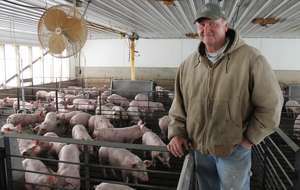
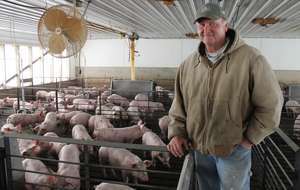
Photo courtesy of AgriNews.com After posting a blog on June 5 about some of the conservation efforts that I’ve implemented on my farm, that afternoon I decided to start a Facebook conversation about sustainable agriculture. I posted this comment in my Facebook status: “Sustainable… Tell me what you think this should mean to my farm.”
Keep in mind that I have a variety of friends on Facebook, but the conversation started with mostly farmers and ranchers telling me “sustainable” meant to them. Here’s one response from a friend of mine whose family operates a Discovery Farm in Arkansas:
I think sustainable doesn’t mean you can’t evolve. What my in-laws have done has sustained their farm for over 100 years. My family farm has been sustained for over 63 years. Our farming practices, which include a lot of new technology, should sustain our farms definitely for our children who farm with us now as well as their children and grandchildren. We work every day for sustenance. Without it, we have no tomorrow. The land is our livelihood. Why would we not want sustainable Ag? It’s just OUR definition!
Because I really wanted to hear from what I know can be a very vocal group of people not directly involved with farming, I specifically reached out to some of my urban friends. One such response follows:
I think sustainable is a literal definition. What does the farmer have to do, not only to sustain the growing capacity of the piece of farmland, but to NOT adversely affect the water? If the land is pumping out crop after crop, but is also rendering the community’s water undrinkable, that is not sustainable. Something has to give. Also, the attitude that the “farmer should decide” everything that goes on his land, yet still receive federal dollars no matter what, is ridiculous. Like it or not, our society works with carrots and sticks. We reward good behavior and punish bad behavior. Farmers are not immune to that formula.
Did you notice the first thing my city friend hit me with was “to sustain the growing capacity of the piece of farmland, but to NOT adversely affect the water”? I could not possibly agree with her more! Most farmers know that they must take care of the land and water to keep farming. They genuinely want to be good stewards of the land. Many of them are interested in taking care of their land in order to pass it on to the next generation.
My urban friend also said that farmers should expect to give us some autonomy when making decisions if they receive Federal dollars. Her comment reflects the viewpoint of many who believe crop insurance should be tied to conservation. This topic is getting a lot of discussion, but I believe there are many reasons why crop insurance should not be tied to conservation. First of all, what if something like a flood happens? A natural disaster like this would knock the farmer out of compliance, and it’s possible he or she would also not have insurance coverage. A double disaster! I would rather see a stand-alone bill drafted to keep “bad players” in line.
The debate on whether to tie conservation to crop insurance continues, but it’s just one issue of contention. About 80% of the 2012 Farm Bill is non-farm related. Ironic, huh? With such a complex document (980 pages already), the Agriculture Reform, Food and Jobs Act of 2012 will undoubtedly be swamped with amendments.
All anyone can do is give his/her input to our elected officials. Make your voice heard, and get involved in the bill-making process. If you sit back and watch, you really have no right to complain about the outcome!
-
Latham Hi‑Tech Seeds
Tissue Testing Helps Unlock Full Yield Potential
A deep, dark, lush green isn’t always the sign of a healthy crop. Sometimes the plant appears healthy but is really suffering from nutrient imbalances. Other times we become suspicious when we see plants with light green colors, or interveinal stripes, and purpling. We begin to ask whether the discoloration is a sign of herbicide, disease or a nutrient insufficiency or imbalance. Further testing is needed to diagnose the situation.
In the human world, annual physicals help determine if we’re on the right health track. This involves blood tests to find out how we compare to the normal limits scale. Armed with the results, doctors can suggest diet changes, supplements or prescription medicines to bring our bodies into balance.
As important as blood tests are for humans, so are tissue samples for our crops. Results of the tissue sample will very accurately reflect the nutritional health of the plant and the soil in which the plant receives its food. While soil test results give a good idea of N –P – K levels, tissue samples are more reliable and trustworthy results.
Tissue samples provide us with the most accurate reflection of the soil and plant’s nutritional matrix. There are 16 essential elements responsible for plant growth and yield. Tissue samples help us know where the plant is so we know where we need to go. By starting early, we can supplement early. If you haven’t sampled in the past, try a field or two this year. Supplement where needed, and get those “WOW” type yields. Click here for tissue sampling instructions.
-
Latham Hi‑Tech Seeds
Latham 1884’s have Outstanding Emergence & Early growth
